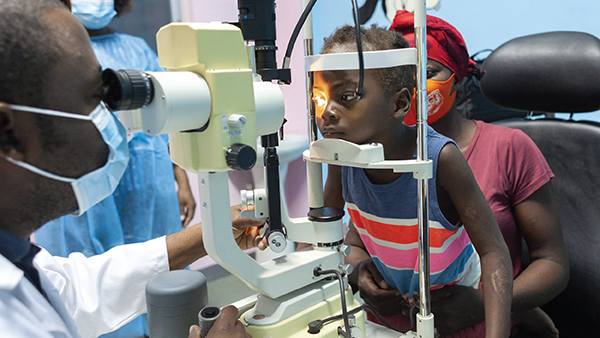Racial Diversity Gap Persists in Eye Care Professions
Study reviews racial and ethnic trends in optometry and ophthalmology residency training programs
Despite substantive efforts to bridge the racial and ethnic gap in healthcare professions, optometry and ophthalmology were identified as two fields where most underrepresented minority (URM) groups still lag behind the broader diversity trends in the US.
Roughly 12.4 percent of the general population identified as Black or African American in 2020 US census data, but only 1.7 percent worked as practicing optometrists and 3.3 percent were optometry students. This disparity was also recorded in ophthalmology training programs, which had lower numbers of URM residents than most other medical subspecialties.
According to Shital Mani, Associate Professor of Optometry, Salus at Drexel University, patient-physician race concordance holds incredible value in a healthcare setting when a patient is seeking out a provider who perhaps identifies within the same racial or ethnic category as them. “It’s about finding common ground with someone of the same racial/ethnic beliefs, values, language, culture, and perhaps even life experiences,” she says. “This is a two-way connection.”
Healthcare providers who understand the specific circumstances or obstacles which result in medication noncompliance, whether cultural, dietary or lifestyle-related, may be able to help the patient address these issues without criticizing their life choices. Through this, they can build trust, demonstrate value and respect, and improve adherence – at least, that’s the theory. For Mani, “it is necessary in better understanding the makeup of the incoming trainees who are going to be the future leaders and educators in the eye care profession.”
As it stands, however, data of this nature in optometry has only been collected since 2019-2020 and published in 2021-22. Mani and her team also observed inconsistencies in the categories used to collect race and ethnicity data across optometry and ophthalmology residency programs. Optometry residency programs lacked a "Multiple Race/Ethnicity" section, which is important for representing individuals who identify as multiracial – but it could go one step further. Mani says that future research must incorporate “multiple categories to accurately and specifically document those who identify as mixed race, rather than using the category of ‘More than One Race’.”
Comparing the 2019-2020 and 2020-2021 data, optometry saw “an increase in residents from the American Indian or Alaska Native, Black or African American, and Hispanic or Latino categories, with little to no change in the Asian, Native Hawaiian or Other Pacific Islander, Other Race/Ethnicity, and Unknown Race/Ethnicity categories,” says Mani. “The White category saw a decrease, however.”
Ophthalmology, on the other hand, saw an increase in the Asian, Hispanic or Latino, and White categories, but the American Indian or Alaska Native, Black or African American, and Native Hawaiian or Other Pacific Islander categories remained mostly unchanged. The Other Race/Ethnicity and Unknown Race/Ethnicity categories saw a decrease.
Mani believes that ophthalmology and optometry currently lack the infrastructure required to mass recruit across racial and ethnic lines. She suggests that early outreach initiatives “should begin at elementary schools and continue through high school and college, where students get the opportunity to learn about eyes and visual health through vision screenings and discussions with local eye care practitioners.”
In partnership with the Office of DEI with the Philadelphia Education Fund (which serves the Philadelphia School District), Mani’s institution, Salus at Drexel University, provides resources and support for students to prepare for and pursue a college education. Specifically, Salus has hosted high school visits where students spend the day exploring the various health care and education programs offered, in addition to interactive presentations and tours of their respective programs from faculty, deans and students.
The New Optometrist Newsletter
Permission Statement
By opting-in, you agree to receive email communications from The New Optometrist. You will stay up-to-date with optometry content, news, events and sponsors information.
You can view our privacy policy here
Most Popular
Sign up to The New Optometrist Updates
Permission Statement
By opting-in, you agree to receive email communications from The New Optometrist. You will stay up-to-date with optometry content, news, events and sponsors information.
You can view our privacy policy here
Sign up to The New Optometrist Updates
Permission Statement
By opting-in, you agree to receive email communications from The New Optometrist. You will stay up-to-date with optometry content, news, events and sponsors information.
You can view our privacy policy here









